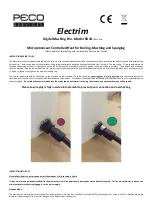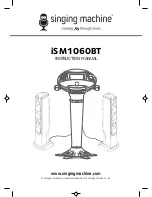
SLICE EXOTHERMIC CUTTING EQUIPMENT
7-1
89250848
SECTION 7:
IMPORTANT PROCESS VARIABLES
Exothermic cutting is easier than most cutting processes. Certain variables reduce the efficiency of this
process, resulting in poor cutting. The most important variables are listed and discussed below.
7.01 Oxygen Pressure
Oxygen maintains the exothermic burn and removes the molten material from the cut. Eighty psi (551.6
kPa) yields the most efficient cutting rates (amount of cut per inch of rod burned) on materials up to 3"
(76.2 mm) thick. Using pressures less than 80 psi (551.6 kPa) on such materials reduces cutting rates
due to inadequate pressure to remove the molten material.
However, scarfing is most efficient using pressures under 80 psi (551.6 kPa). Lower pressures offer
a more controllable scarfing action. With material thicker than 3" (76.2 mm), pressures over 80 psi
(551.6 kPa) can be used to give the oxygen enough velocity to blow away molten material at the bottom
of the cut. Using higher pressures on thicker materials causes a more forceful oxygen jet and faster
rod consumption. A sawing motion at 80 psi (551.6 kPa) or a larger diameter rod may help cut these
materials more efficiently.
When piercing, 80 psi (551.6 kPa) is the best pressure to use. To pierce, an operator should reduce the
pressure slightly to control the distance the molten material travels. Once there is a hole, full pressure
should be used.
The operator can vary pressure by using the torch’s oxygen lever. When the thickness of the material -
usually more than 12" (304.8 mm) - needs added pressure to blow the molten material out of a pierced
hole, pressures above 80 psi (551.6 kPa) are used. This is the only exception.
The SLICE cutting process uses standard industrial-grade oxygen to support the exothermic reaction
and to remove molten metal. All SLICE equipment uses standard oxygen fittings. SLICE torches are
equipped with 10 ft. (3.05 m) of 1/4" (6.4 mm) I.D. oxygen hose. The usual operating pressure is 80
psi (551.6 kPa). Applications such as cutting material sections 3" (76.2 mm) and thicker might require
higher operating pressures. Pressures as low as 40 psi (275.8 kPa) have been used to do jobs such as
washing off rivet heads and scarfing out small cracks for repair.
The oxygen consumption rate for SLICE cutting rods at 80 psi (551.6 kPa) is 7 to 7.5 cfm (0.21 cmm)
for the 1/4" (6.4 mm) diameter cutting rods and 12 to 13 cfm (0.34 to 0.37 cmm) for the 3/8" (95 mm)
diameter cutting rods. This rate varies if a different operating pressure is used.
!
WARNING
DO NOT
use compressed air for exothermic cutting. Compressed air does not contain
enough oxygen to support the burn; therefore, impurities can damage or destroy the torch
and components. The torch could burn from the inside or even explode from the buildup
of dirt from the compressed air in the oxygen-supply tube and cause serious injury to the
operator.
PROCESS VARIABLES
Summary of Contents for SLICE PACKAGE
Page 16: ...4 4 SLICE EXOTHERMIC CUTTING EQUIPMENT 89250848 This Page Intentionally Blank EQUIPMENT...
Page 26: ...8 2 SLICE EXOTHERMIC CUTTING EQUIPMENT 89250848 This Page Intentionally Blank APPLICATIONS...
Page 28: ...9 2 SLICE EXOTHERMIC CUTTING EQUIPMENT 89250848 This Page Intentionally Blank TROUBLESHOOTING...
Page 33: ......












































